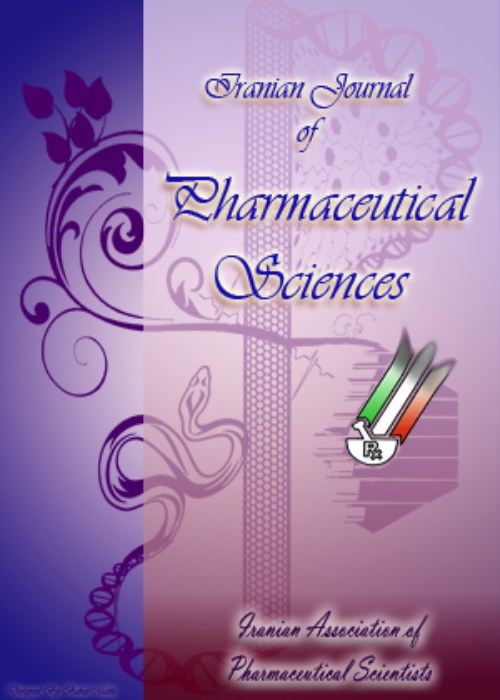Anti-Nociceptive Effects of Geraniin and an Aqueous Extract of the Aerial Parts of Phyllanthus muellerianus (Kuntze) Exell. in Murine Models of Chemical Nociception
Author(s):
Article Type:
Research/Original Article (دارای رتبه معتبر)
Abstract:
Plants from the genus Phyllanthus like Phyllanthus muellerianus have long been used in folk medicine for several ailments including fevers, toothache, dysmenorrhea, anemia and paralysis. Despite these folkloric uses, there is little scientific data supporting the use of this plant in the management of pain. The purpose of this study is to evaluate the aqueous extract of the aerial parts of Phyllanthus muellerianus and its dominant secondary metabolite, geraniin for potential anti-nociceptive effects. The acetic acid-induced abdominal writhing and formalin–induced nociception tests were used to assess the anti-nociceptive effects of the aqueous extract and geraniin. Morphine and diclofenac were used as standard anti-nociceptive agents. The involvement of opioidergic, adrenergic, muscarinic, adenosinergic, serotonergic and nitric oxide pathways in the anti-nociceptive effects of the extract and geraniin were evaluated by selective antagonism of these pathways. Additionally, the effects of voltage-sensitive Ca2+ channels and ATP-sensitive K+ channels were also assessed by selective blockade with nifedipine and glibenclamide respectively. Oral administration of the aqueous extract (30, 100, 300 mg kg-1) and geraniin (3, 10, 30 mg kg-1) produced significant anti-nociceptive effects in both models of chemical nociception. The anti-nociceptive effects of both the extract and geraniin were not antagonized by L-NAME (10 mg kg-1), yohimbine (3 mg kg-1), atropine (5 mg kg-1), theophylline (5 mg kg-1), ondansetron (0.5 mg kg-1) glibenclamide (8 mg kg-1) or nifedipine (10 mg kg-1). Naloxone (2 mg kg-1), however, reversed the anti-nociceptive effects of only geraniin. In conclusion, the aqueous extract and geraniin obtained from the aerial parts of Phyllanthus muellerianus possess both peripheral and central anti-nociceptive effects in murine models of chemical nociception with the anti-nociceptive action of geraniin involving possibly the opioidergic pathways.
Keywords:
nociception , muellerianus , aerial , formalin , naloxone , Acetic acid
Language:
English
Published:
Iranian Journal of Pharmaceutical Sciences, Volume:12 Issue: 3, Summer 2016
Pages:
17 to 30
magiran.com/p2121542
دانلود و مطالعه متن این مقاله با یکی از روشهای زیر امکان پذیر است:
اشتراک شخصی
با عضویت و پرداخت آنلاین حق اشتراک یکساله به مبلغ 1,390,000ريال میتوانید 70 عنوان مطلب دانلود کنید!
اشتراک سازمانی
به کتابخانه دانشگاه یا محل کار خود پیشنهاد کنید تا اشتراک سازمانی این پایگاه را برای دسترسی نامحدود همه کاربران به متن مطالب تهیه نمایند!
توجه!
- حق عضویت دریافتی صرف حمایت از نشریات عضو و نگهداری، تکمیل و توسعه مگیران میشود.
- پرداخت حق اشتراک و دانلود مقالات اجازه بازنشر آن در سایر رسانههای چاپی و دیجیتال را به کاربر نمیدهد.
In order to view content subscription is required
Personal subscription
Subscribe magiran.com for 70 € euros via PayPal and download 70 articles during a year.
Organization subscription
Please contact us to subscribe your university or library for unlimited access!


